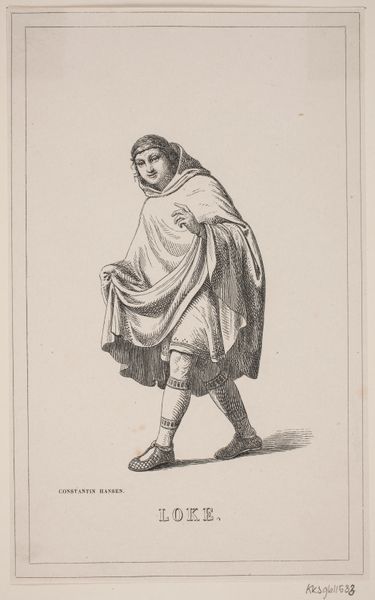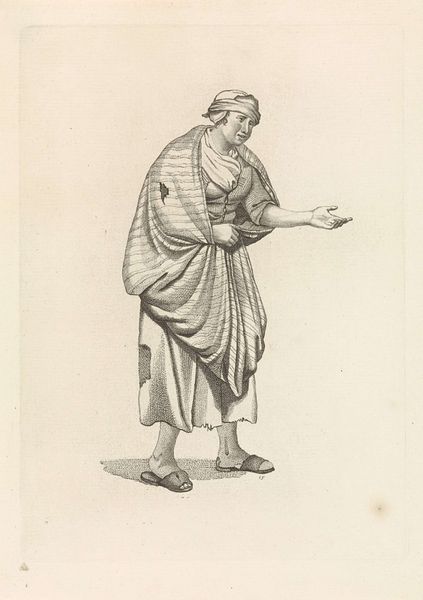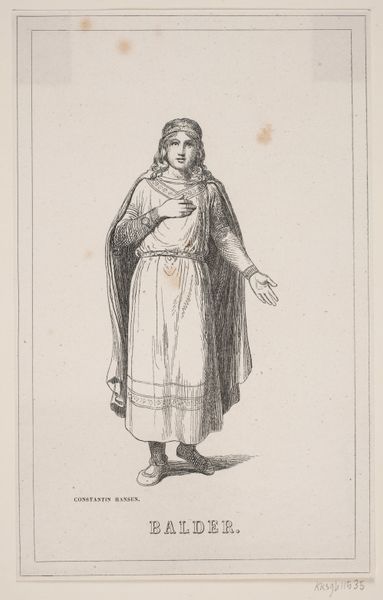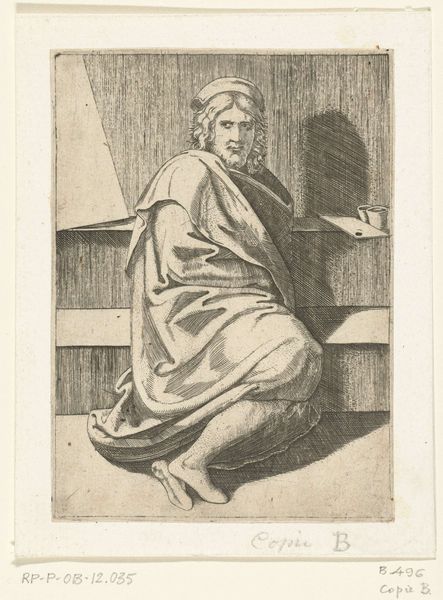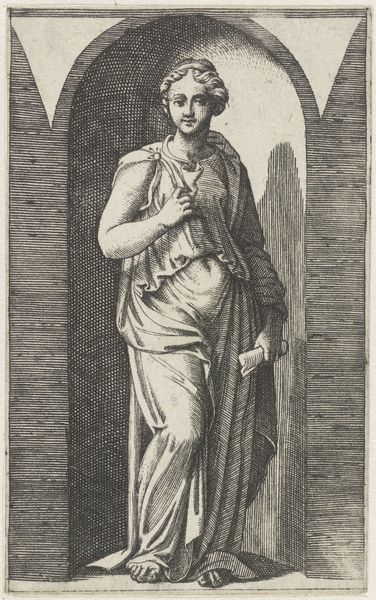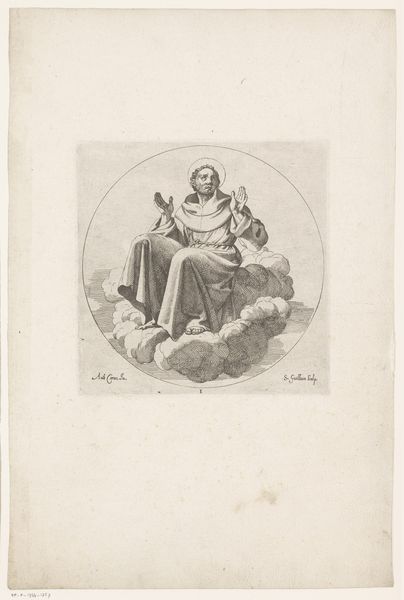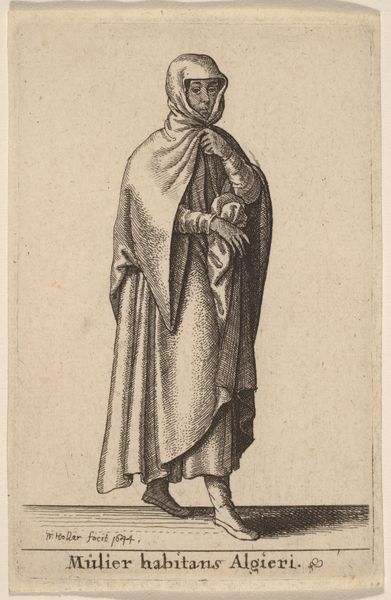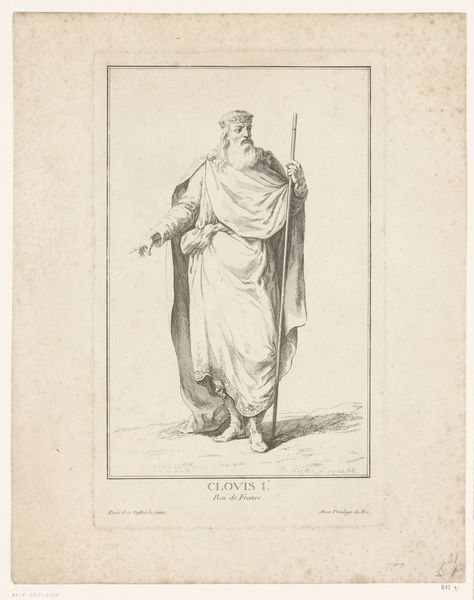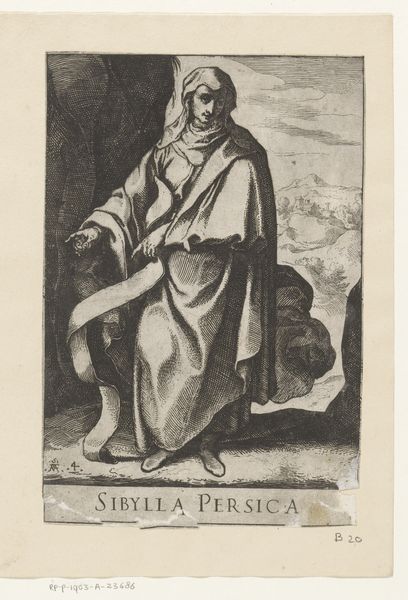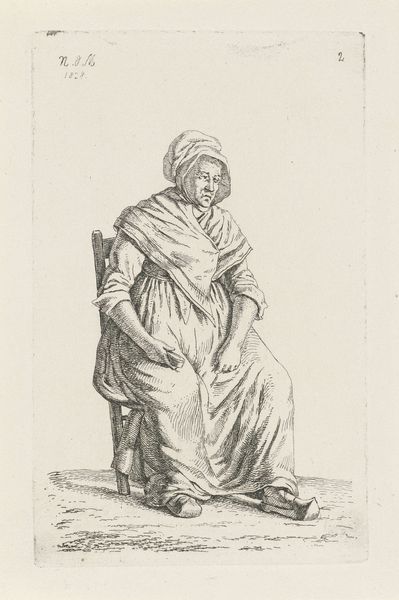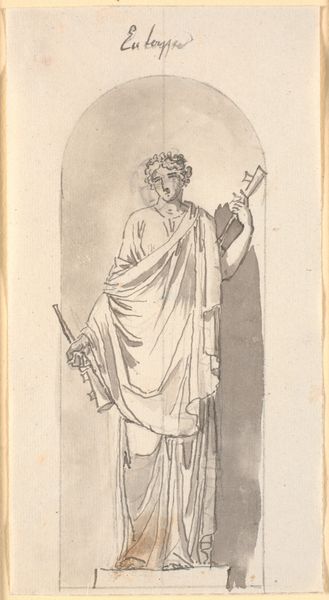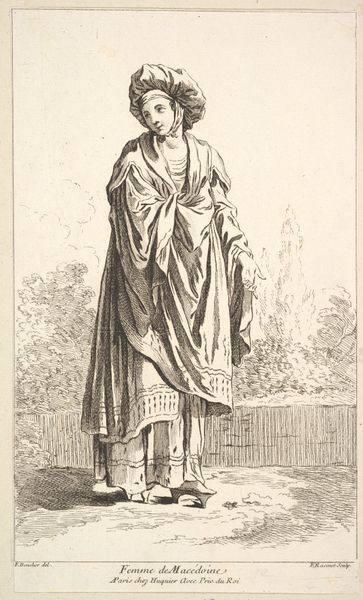
Brage. Illustration til Fabricius' Danmarks historie 1, 128. 1854
0:00
0:00
Dimensions: 203 mm (height) x 127 mm (width) (bladmaal)
Curator: Looking at this piece, I can almost hear the echoes of ancient halls! We're looking at "Brage. Illustration til Fabricius' Danmarks historie 1, 128." crafted in 1854 by H.C. Henneberg. It's currently housed right here at the SMK. Editor: My first impression? Serenity amidst the crosshatching! There's a remarkable stillness to this depiction of Brage, especially considering it's a print. The fine lines and stark contrast create a captivating mood, almost meditative. Curator: Absolutely. As an illustration for Danish history, it taps into Romanticism's fascination with folklore. Brage, the Norse god of poetry and music, is rendered with an almost mournful expression. Notice the instrument; it isn't just a prop. Editor: Precisely! This engraving, likely a woodcut, served a crucial function in disseminating historical narratives to a broader public. Prints democratized access to visual culture in a way that painted works simply couldn't. Consider the labor involved. The block cutter, the printer, the very readers handling these fragile leaves all took part in creating meaning. Curator: A meaning steeped in a longing for a perceived 'golden age.' The Nordic past was seen as a source of national identity during this period. The somewhat idealized portrayal of Brage, noble and wise, served a very specific cultural purpose. I love how his hand is posed, as if he's conjuring the perfect verse. Editor: And notice the subtle cues of Romanticism in the production of this printed material. The texture of the engraving lends itself beautifully to emphasizing a sentimental effect for those consuming this book illustration. It merges storytelling, craftsmanship, and mass communication into something quite unique. The artist has transformed ink and wood into more than just an image. Curator: It’s as if the very act of carving these lines imbues the image with a weight of history, don’t you think? You feel it in the shadows around Brage's eyes and the deliberate, careful crafting of the harp itself. Editor: Exactly. A commercial object that yearns for some other world entirely. And on that paradoxical note… Curator: ... perhaps it’s time we moved on. It makes you wonder, doesn't it, about the songs Brage would sing if he could step out of the print and into this gallery today.
Comments
No comments
Be the first to comment and join the conversation on the ultimate creative platform.
